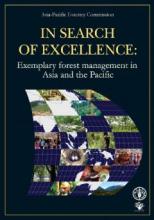/ library resources
Showing items 1 through 9 of 210.In The National Forest Plan of 1977, the poor and mountainous kingdom of Nepal recognized the need for the people’s participation in managing its forests.
RECOFTC conducted a review of the linkages between community forestry and poverty, with an emphasis on Asia. The analysis shows that clear empirical evidence exists, demonstrating that community forestry has provided tangible benefits to poor people.
In search of excellence deviates from the path that most authors have taken. Instead of dwelling on the failures and the negative, it celebrates the “good” and the many positive management efforts in the Asia–Pacific region.
Does providing increased access to secure property rights have a positive impact on people's livelihoods? This policy brief questions Hernando de Soto's contention that capitalism can be made to work for the poor, through formalising their property rights in houses, land and small businesses.
Today, many rural poor Filipinos are using state law to try to claim land rights. In spite of the availability of a much stronger set of legal resources than ever before, claiming legal land rights remains difficult.
This report summarise the research findings of a project to examine the current processes of land rights registration in Ethiopia, Ghana, and Mozambique and assess their outcomes for poor and vulnerable groups.
This paper argues that Ghanaian litigants in land disputes favour authoritative state legal-institutions over out-of-court settlements.
One of the key objectives of the South African land reform programme is to provide poor people with an additional asset that they could use to develop strategies to escape from poverty.
Malawi has pursued an agricultural-led development strategy since independence in 1964. This was a dual strategy which promoted estate agriculture for export earnings on the one hand, and smallholder agriculture for food security and subsistence needs.
Pagination
Land Library Search
Through our robust search engine, you can search for any item of the over 73,000 highly curated resources in the Land Library.
If you would like to find an overview of what is possible, feel free to peruse the Search Guide.




